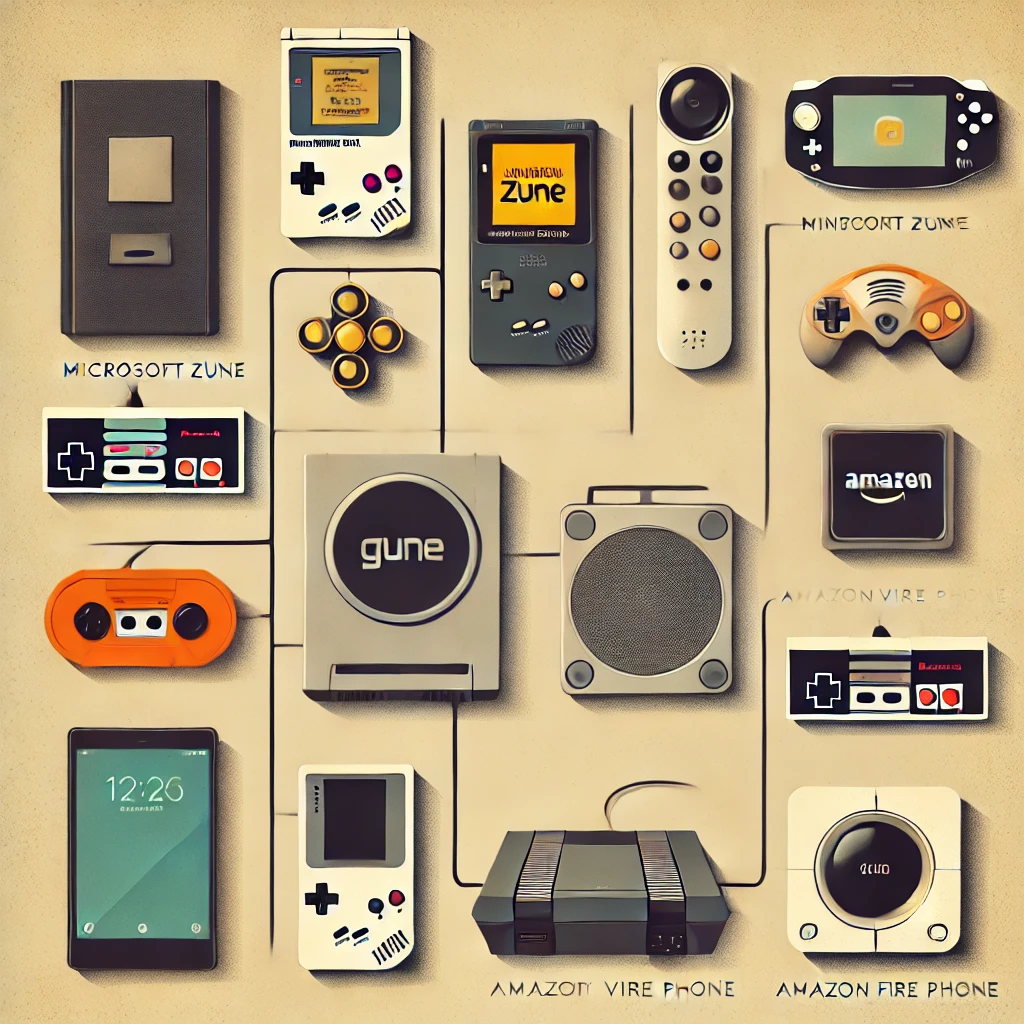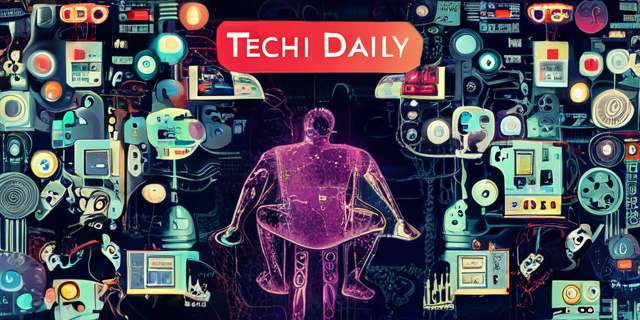In the world of technology, not every gadget becomes a hit. Some fail spectacularly, but even those failures teach us valuable lessons and spark nostalgia. These failed gadgets may not have succeeded, but they paved the way for future innovations. In this article, we’ll look at eight tech gadgets that didn’t make it big but are still remembered for their creativity and ambition.
Table of Contents
What Are Failed Gadgets in Tech History?
Failed gadgets are devices that, despite high expectations and cutting-edge technology, failed to gain market traction. These failures often stem from poor marketing, bad timing, or features that didn’t resonate with users. Yet, these gadgets often find a unique place in our hearts for their boldness and innovation.

Top 8 Failed Gadgets in Tech History
1. Google Glass
The Promise: Launched in 2013, Google Glass was supposed to be the future of wearable tech, offering augmented reality and voice-controlled functionality.
The Failure:
- Privacy concerns due to its camera.
- High price point of $1,500.
- Lack of a clear use case for everyday users.
Why We Loved It Anyway: Despite its failure, Google Glass sparked conversations about the future of AR and inspired a new generation of wearable devices.
Learn more about Google Glass and its impact on wearable tech
2. Nokia Smartphones
The Promise: Nokia once dominated the mobile phone market and aimed to continue its success with smartphones.
The Failure:
- Failure to adapt to iOS and Android ecosystems.
- Insistence on using the Symbian OS and later Windows Phone OS.
- Poor app support compared to competitors.
Why We Loved It Anyway: Nokia’s durability and iconic designs (like the 3310) made it a nostalgic favorite, even as the smartphone era left it behind.
Learn more about Nokia’s strategic missteps and resurgence
3. Segway PT
The Promise
The Segway PT was marketed as the ultimate personal transport device, expected to revolutionize urban commuting.
The Failure
- Bulky design and high cost ($5,000 at launch).
- Limited practical use.
- Became synonymous with niche users like mall cops and tourists.
Why We Loved It Anyway
Its futuristic design and quirky functionality made it a pop culture icon, frequently seen in movies and TV shows.
External Reference
Explore the history of the Segway and its cultural impact
4. Microsoft Zune
The Promise
Microsoft’s Zune was designed to compete with the iPod, offering music streaming and a sleek design.
The Failure
- Entered the market too late (2006) when iPod had already dominated.
- Limited ecosystem compared to Apple’s iTunes.
Why We Loved It Anyway
Zune had a loyal fanbase who appreciated its unique features, like Zune Social, a music-sharing function ahead of its time.
External Reference
Discover how the Zune influenced future music streaming
Also Read,
OpenAI Sora Turbo: Text-to-Video Generation Features – Everything You Need to Know
Funny WiFi Names That Deserve Their Own Netflix Series (Hilarious Ideas You Can’t Miss!)
What Happens If the Internet Disappears Forever and Never Return Back
Will You Buy the New Tesla Phone Pi? Find Out Why!
Is Google a Website or a Search Engine? 5 Incredible Insights You Shouldn’t Miss
5. Amazon Fire Phone
The Promise
Amazon’s Fire Phone aimed to integrate shopping into your everyday life, featuring Firefly technology that scanned real-world objects for purchase.
The Failure
- Overpriced and underpowered compared to competitors.
- Limited app ecosystem.
Why We Loved It Anyway
Its quirky features and innovative approach to shopping left a lasting impression, even if it didn’t sell well.
External Reference
Read about the Fire Phone and Amazon’s lessons from failure
6. Nintendo Virtual Boy
The Promise
Nintendo’s Virtual Boy was one of the first attempts at consumer-grade virtual reality gaming.
The Failure
- Uncomfortable design causing neck strain.
- Monochromatic red display, leading to headaches.
- Limited game library.
Why We Loved It Anyway
It was a bold attempt at VR in the 1990s, paving the way for today’s VR innovations.
External Reference
Find out how the Virtual Boy paved the way for modern VR
7. Pebble Smartwatch
The Promise
Pebble was a Kickstarter sensation, bringing customizable smartwatches to the masses before big brands entered the market.
The Failure
- Limited resources to compete with giants like Apple and Samsung.
- Acquisition by Fitbit in 2016 marked the end of its independent journey.
Why We Loved It Anyway
Pebble’s innovative approach and open ecosystem inspired the modern smartwatch industry.
External Reference
Read about Pebble’s journey and its impact on wearables
8. Sony Betamax
The Promise
Betamax was Sony’s answer to home video recording, promising superior picture quality compared to VHS.
The Failure
- Shorter recording times compared to VHS.
- Limited availability of pre-recorded content.
Why We Loved It Anyway
Betamax was a technological marvel, and its rivalry with VHS is legendary in tech history.
External Reference
Learn why Betamax lost the format war but won hearts
Why Failed Gadgets Hold a Special Place in Our Hearts
Failed gadgets are often remembered fondly for their ambition and creativity. They remind us of a time when companies dared to think outside the box. These gadgets may not have succeeded, but they pushed the boundaries of what was possible, inspiring future innovations.
1. Is Google.com a website?
Yes, Google.com is a website that hosts Google’s search engine and other services.
2. Why is Google a search engine?
Google is a search engine because its primary role is to retrieve information from the web based on user queries.
3. What sets Google apart from other search engines?
Google’s advanced algorithms, user-friendly design, and comprehensive ecosystem make it unparalleled.
Sponsored Content: Are you looking for a reliable hosting provider in Nepal? Click the banner below to purchase your domain and hosting, and take your business to new heights!

Lessons from Failed Technology
- User-Centric Design Matters: Gadgets must solve real problems for users.
- Timing Is Everything: Entering the market too early or late can spell disaster.
- Price Point Matters: Overpriced gadgets rarely succeed, no matter how innovative.
- Effective Marketing Is Key: Even great products need strong campaigns to succeed.
FAQs
1. Why do some gadgets fail despite being innovative?
Gadgets often fail due to poor marketing, high costs, lack of user appeal, or entering the market at the wrong time.
2. What’s the most famous failed gadget?
Google Glass, Nokia smartphones, and the Microsoft Zune are among the most famous, often cited as cautionary tales in tech innovation.
3. Are there lessons we can learn from failed gadgets?
Absolutely! Failed gadgets teach us the importance of market research, timing, and user-centric design.
4. Do companies benefit from failed gadgets?
Yes, companies often use the lessons from failures to refine future products and strategies.
5. What’s the role of nostalgia in failed gadgets?
Nostalgia keeps the memory of these gadgets alive, reminding us of their boldness and inspiring future innovations.
Conclusion
These eight gadgets may not have been commercial hits, but they shaped the tech world in surprising ways. Their failures taught us valuable lessons about innovation, timing, and user needs, while also reminding us of the courage it takes to dream big. From Nokia smartphones to Google Glass and the Zune, each of these devices has a fascinating story that continues to inspire tech enthusiasts today.
